
Donate
Everyone needs nature, now more than ever. Donate today and you could help people and nature to thrive at the places we care for.
A green oasis in the city at the heart of the community.
Morden Hall Road, Morden, London, SM4 5JD
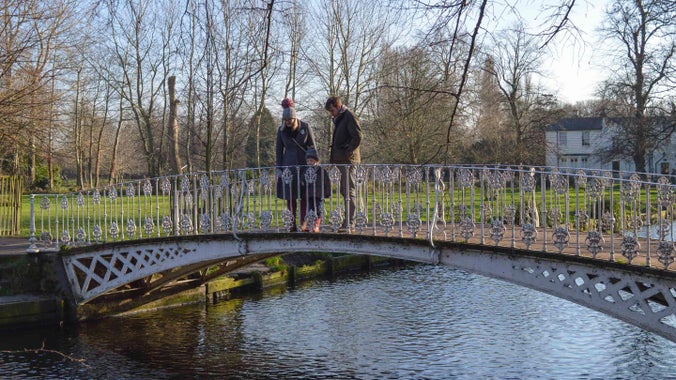
| Asset | Opening time |
|---|---|
| Parkland | Open all day |
| Car Park | 09:00 - 17:00 |
| Garden centre | 09:00 - 17:00 |
| Potting Shed Café | 09:00 - 16:00 |
| Rose garden | 09:00 - 17:00 |
| Second-hand bookshop | 10:00 - 15:00 |
| Stableyard café | Opening times vary |
Last orders in Stableyard cafe is 15mins before closing time. Toilets close at 5pm.
Second-hand bookshop in the Stableyard, open daily 10.00am-3.00pm. For large donations, please email: mhpbookshop@nationaltrust.org.uk
Potting Shed Café with indoor and outdoor seating. Stableyard Café open weekend and during school holidays only.
Limited Pay & Display Car Park. First 1.5 hours are free, beyond that there is an hourly charge. JustPark: area code ID 80629 (or call 07520634455). Tickets can also be purchased at the Garden Centre. Free for NT members. Please scan membership card for ticket. Free and paid tickets must be displayed.
We welcome dogs on a short lead in the Rose Garden, around buildings (Stableyard, Snuff Mill), in the cafés, the Garden Centre, around the Adventure Play Area, on the Wetland Boardwalk. Please, always keep your dog under close control in the open parkland.
History tours on selected Sundays, please check website for dates.
The National Trust's only garden centre has an extensive outdoor plant sales area. Open daily 9am-5pm. (Closed 25, 26 December, 1 January and Easter Sunday).
The National Trust's only garden centre stocking gifts, local products and gardening accessories. Open daily, 9am-5pm (Closed 25, 26 December, 1 January and Easter Sunday).
Toilets and baby changing facilities are located in the Stableyard, Snuff Mill, Garden Centre and Potting Shed Café. Accessible toilet located in the Snuff Mill, Garden Centre and Potting Shed Café. All toilets have automatic hand driers.
Blue Badge parking. Adapted toilet at Snuff Mill. Grounds: loose gravel paths. Rose Garden: fully accessible. Wandle Trail: all-ability; Garden Centre: entrance level and accessible, induction loop. Cafés: Induction loop, wheelchair accessible. Wetlands: Boardwalk.
The majority of paths are gravel tarmac mix, flat with slight inclines up to bridges. The Edwardian Rose Garden is fully accessible. Please note, one path in the north park can be muddy during wet weather. All-ability trails: the Wandle Trail takes you along a well-maintained, flat path through the park, visiting meadow and wetlands along the way.
Unisex accessible toilet is located in the Snuff Mill (170cm x 290cm (5ft 7in x 9ft 6in) with a right hand transfer and automatic hand driers at appropriate height.
Four disabled car park spaces located along the edge of the car park, nearest to Potting Shed Café and Garden Centre.
In the Garden Centre and Cafés.
Potting Shed Café is located next to car park, with entrance level and accessible. Food service via staffed counter.
Garden Centre: access via bridge from main car park and through automatic doors. Entrance level and accessible. Access to outdoor section of garden centre also via automatic doors. Bookshop: Access via slight slope and single standard door, and the flooring is tiled/cobbled.
Various benches throughout the park and in the Rose Garden. Indoor and outdoor seating available at the Potting Shed Café. Outdoor seating available in the Stableyard. Accessible picnic benches located by the Stableyard.
A manual wheelchair is available for use. We recommend pre-booking by calling ahead of your visit to ensure availability. Telephone: 0208 5456850
NCN20. passes through.
Bike parking: main car park, in front of the Potting Shed Cafe and by the Snuff Mill.
Plan your route to Morden Hall Park using the CycleStreets journey planner via the link below. (This journey planner uses OpenStreetMap data which is generally excellent but accuracy cannot be guaranteed. If you come to a footpath or other cycle-prohibited track, please don't ride on it.)
Throughout the year we host a variety of events and activities for all ages. From children's storytelling and crafts sessions, family trails, and nature-based activities to outdoor theatre, exhibitions from local artists and well-being workshops such as Forest Bathing. Take a look at what's coming up.

Download a map of the park detailing the location of our facilities, Garden Centre, Cafes, historic buildings and other points of interest.
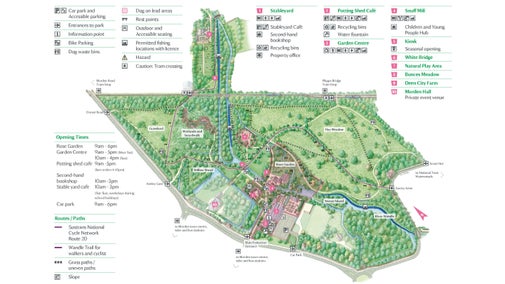
The National Trust has teamed up with AccessAble to give visitors detailed information to work out if a place is going to be accessible for them. You can view Morden Hall Park's detailed access guide here. A manual wheelchair is available for use from the Garden Centre, but we recommend pre-booking by calling ahead of your visit to ensure availability.

Find out the family-friendly things to do at Morden Hall Park from taking part in trails to watching outdoor theatre and spotting wildlife such as wetland birds.

Morden Hall Park is a three pawprint rated place. There are 125 acres of beautiful parkland, paths and riverside for you and your dog to explore here.

Discover how Morden Hall Park works with youth and education groups to provide positive learning experiences in the outdoors.

When Gilliat Hatfeild left Morden Hall and its estate to the National Trust in 1941, he stipulated that the park should be available for the public for free which is the case today. To ensure that the park remains the urban oasis for people and nature, we have created the following guidelines.

An oasis of green within urban south London. Wetlands, Rose Garden, meadows, former snuff mill and play area, alongside the River Wandle.
Two-and-a-half-acre inter-war Rose Garden. Fifty formal flower beds, with around 45 different varieties of rose, all from the Edwardian period.
The National Trust's only garden centre. Selling peat-free plants and seeds, fences, gravel, tools, statues, gifts and pet care.
Second-hand bookshop selling paperbacks and hardbacks of all genres. For donations, please email mhpbookshop@nationaltrust.org.uk
Potting Shed Café serves a variety of hot and cold drinks, hot dishes and treats. Stableyard Café serves hot and cold drinks and light snacks. Dog-friendly.
Rich, ecologically significant wetland habitat at the heart of the River Wandle.
Located in a former snuff mill. Organised activities for schools and groups.
Natural play area with log stepping-stone courses, swing, zip wire and climbing cargo net.
Discover our feathered friends of Morden Hall Park in winter. We’ll be hosting bird walks throughout the day, with expert volunteers on hand to help with bird ID and to show you the best birdwatching spots across the 125-acre parkland and riverside wetlands. Find our Gazebo by the White Bridge Lawn.
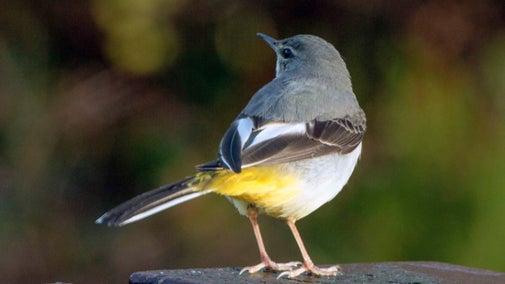
Join artist Edward Luke Thrush (he/him) for a Queer Botanical Drawing Workshop celebrating LGBTQ+ History Month in this welcoming and inspiring session for all. Explore how queerness and nature connect through creative drawing, learn botanical techniques inspired by plants such as the Westfelton Yew and Ginkgo, and enjoy a guided walk around the Rose Garden. Booking essential. £35/person. All materials, including a take‑home booklet, are provided. 1pm - 4pm.
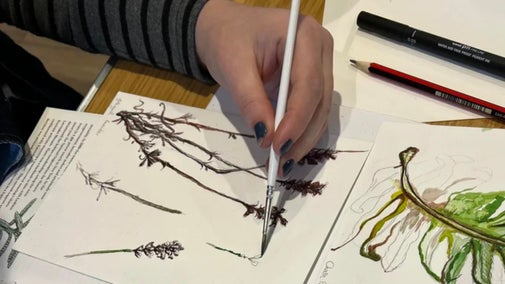
Celebrate LGBTQ+ History Month by exploring the intersection of queerness and nature. Join nature educator, Abi Young to learn about queerness in nature and in the park’s flora with a talk followed by a guided nature walk around the park. Booking essential. Tickets: £10 standard and £7 concession (limited availability). 11am - 12.30pm
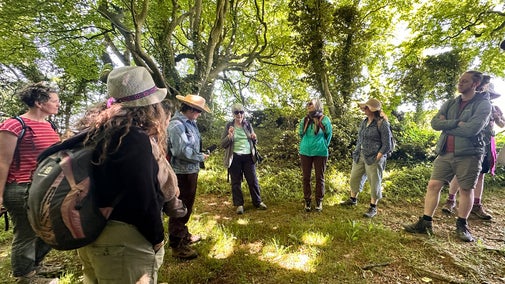
Wrap up and explore Robin’s Winter Adventure Trail. Learn how robins keep warm, find food and protect their territory through simple games and nature clues. £2 trail sheet, available from the Garden Centre.

If you’ve enjoyed our popular forest bathing events, you know the physical and mental benefits of connecting with nature. Now, experienced facilitator Nigel Grimes brings that expertise to help families. On Tuesday, 17 February, join Nigel for a reading of his new children’s book and a 45-minute guided session in the rose garden, sharing techniques to help parents and kids embrace nature, reduce anxiety and rediscover the joy of slow time outdoors. Suitable for ages 5+. £6 per person. Children must be accompanied by an adult.
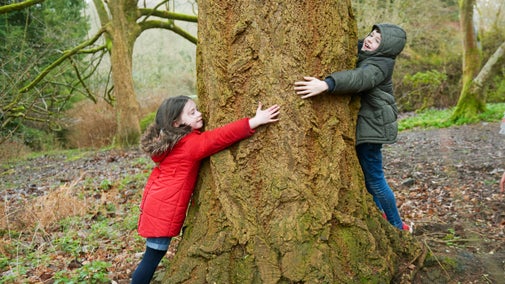
Celebrate the Lunar New Year with creative craft sessions in the Stableyard Exhibition Space with Play Mandarin. Then welcome in the Year of the Horse with our free dragon dance starting in the Stableyard at 1pm. Craft sessions run at 10am, 11am, and 12pm, last 45 minutes, and are suitable for ages 3+. Booking essential. £10 per child.

Our bunting workshops returns this February half-term with an opportunity to design a bunting flag and include it as part of a spring display around the park. Suitable for children from 7 years, drop in to the Stable Yard Exhibition Space any time between 2pm and 4pm.
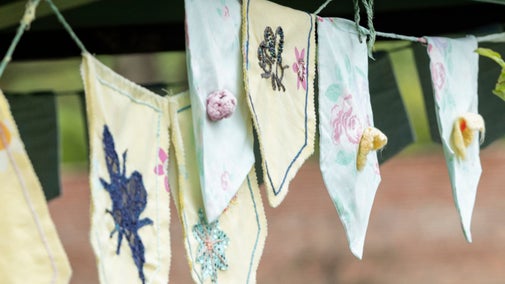
Grab your coats and head out to Morden Hall Park this February half term. Connect with nature with a special outdoor experience and story time with experience forest bather, Nigel Grimes. Celebrate the Year of the Horse with our Lunar New Year craft sessions with Play Mandarin and discover the winter world of robins with our self-led trail (£2 from the Garden Centre).

Learn about the park's most significant trees on this exclusive guided walk with one the park's rangers. Find out the London Plane, Hornbeam and Gingko Biloba and the work the rangers do to care for them and the parklands on this gentle one and a half hour walk. Booking essential. £6/person.
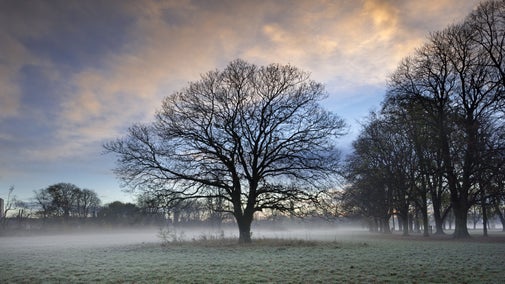
From river and wetland walks, to remnants of the park's history and an adventure playground for the little ones, see how the park changes along with the seasons.
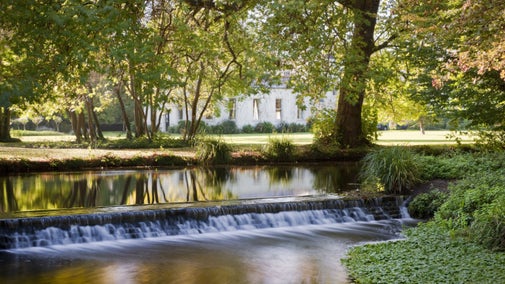
Take a stroll through the historic parkland of Morden Hall Park, created by the Hatfeild family in the 19th century. A true oasis in the heart of South London.

Enjoy freshly prepared tasty snacks and cakes at a choice of two cafés and pick up the perfect read at the second-hand bookshop, all supporting the National Trust’s work.

Our secondhand bookshop is run by a team of volunteers that sort through your donations keeping its shelves well stocked with everything from beautiful art books to practical cooking and gardening guides, as well as best-selling fiction and children’s books. Every book you buy contributes to vital maintenance and conservation work in the park. The bookshop is open daily from 10am to 3pm. Small donations can be accepted at the bookshop. Follow the link for details regarding larger donations.

Shop for plants, seeds, pots, gardening equipment, toys and games, gifts and homewares at the National Trust’s first garden centre, with all profits supporting our work.

Across the country, our staff and volunteer gardeners look after many gardens at the properties in the National Trust's care. Here, they share their tip on making the most out of your garden each season.
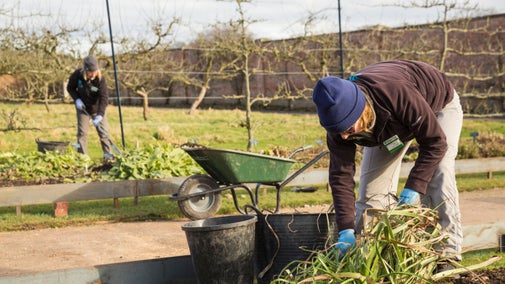
Our Park Explorers group is for children aged 2-5 years old and their parents/carers. Together we learn about the natural world around us, with a different outdoor theme each week.
Discover a wealth of bird life at Morden Hall Park this January. Drop in to meet expert volunteers and help us identify the feathered friends that call this urban oasis home.
Join us for a lively orchard celebration filled with music, song and blessing. Make your own wassail headdress, enjoy live fiddle and accordion, sip warm spiced cider and watch the Black Swan Border Morris dance at 3pm for the orchard’s good health.
Explore nature and queerness through botanical drawing with artist Edward Luke Thrush for LGBTQ+ History Month. Suitable for all abilities.
This LGBTQ+ History Month, join nature educator Abi to learn about queerness in nature and in the park’s flora with a lecture followed by a guided nature walk around the park.
Discover the winter world of robins at Morden Hall Park.
This February Half Term, join us for a storytelling session of 'The Forest’s Secret: Helping Children Discover the Magic of Nature' along with simple guided techniques to re-connect with nature in our Rose Garden.
Join Play Mandarin for a fun session of storytelling and activities inspired by the Lunar New Year. For children aged 3+.
Morden Hall Park is a green oasis in the city, giving you a taste of a country estate with a glimpse of its agricultural and industrial history. This tranquil former deer park is one of the few remaining estates that used to line the River Wandle during its industrial heyday. The river meanders through the park creating a haven for wildlife. The snuff mills, which generated the park's income in the past, survive to this day. We've renovated the western mill, and it's now used as a Children and Young People hub. The renovated Stable Yard is the heart of the park with a second-hand bookshop, café and facilities while surviving estate buildings are used as workshops by local artists. The park is also home of the National Trust's only garden centre.
When you step through the gates, you'd be forgiven for imagining yourself to be in the middle of the English countryside. Surrounded by meadows, an Edwardian rose garden, trees and the gentle sounds of birdsong and running water, the park offers a rare sense of discovery and a chance to get away from it all. Entry to the park is free for all.
Delve into the past at Morden Hall Park, from marshy field to country estate and now oasis for the local community.

Discover more of the history of this waterside wildlife habitat in the Wandle Valley, one of the National Trust’s first acquisitions and just a short walk from Morden Hall Park.

Learn about how we‘ve preserved traditional methods of looking after the land and the wildlife that lives there, and find out how you can get involved.
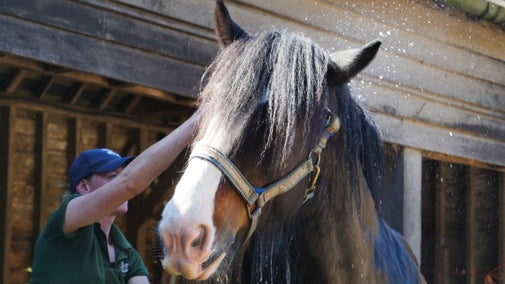
The National Trust in London works with urban communities, organisations and policy makers to help make London an even better place to grow up and grow old by increasing access to green spaces, fostering pride in local history and improving wellbeing. In addition to National Trust Places, we collaborate on a range of initiatives to help end unequal access to nature, culture and heritage, restore nature and inspire millions more people to care for nature and their heritage.
Thinking about volunteering at this special place? Here’s what you need to know.


Everyone needs nature, now more than ever. Donate today and you could help people and nature to thrive at the places we care for.
By sharing your email address you’re agreeing to receive marketing emails from the National Trust and confirm you’re 18 years old or over. Please see our for more information on how we look after your personal data.